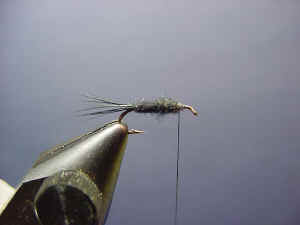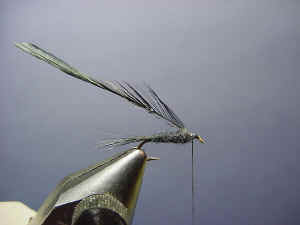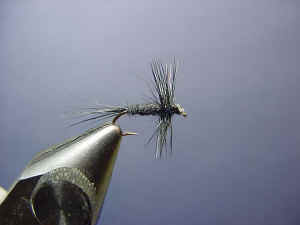|
Fly of the Month Bob Ireton brings together his experience in fly fishing, aquatic entomology, and knowledge of fly tying techniques and materials, to design and tie durable and effective flies. |

|
![]()
Volume 3, Issue 5
May 2002
![]()
BLACK MIDGE
Fly and Text by Bob Ireton
Photography by Bob Kimsey and Bob Ireton
Midge fly patterns represent those very small insects found on and around smooth water, such as spring creeks, tailwaters, quiet stretches of streams, and ponds and lakes on calm days. Even though midges are quite small, there are usually large numbers of them available for fish to feed on. Midges are an important food source, especially for trout, small and large!
Tying and fishing midge patterns probably is one of the most challenging aspects of fly fishing. One needs to do both in a delicate and deliberate manner.
This pattern is especially small, size 20-26, so I tied it in size 16 so it would be easier for you to see.
MATERIALS
Hook TMC 100, Dai-Riki 300, Daiichi 1100, Mustad 94840, Orvis 1509 Size 20-26
Thread 8/0 Black
Tail Black hackle fibers
Body Black superfine dubbing
Hackle Black
TYING STEPS
![]()
Copyright © 1998 - thisyear The Buckeye United Fly Fishers, Inc. Cincinnati, OH 45242
The Buckeye United Fly Fishers, Inc is a non-profit corporation organized under section 501(c)(3) of the Internal Revenue Code, incorporated in the State of Ohio for the preservation, conservation and wise use of our fishing waters and game fish; and to assist in the protection and improvement of our natural resources




